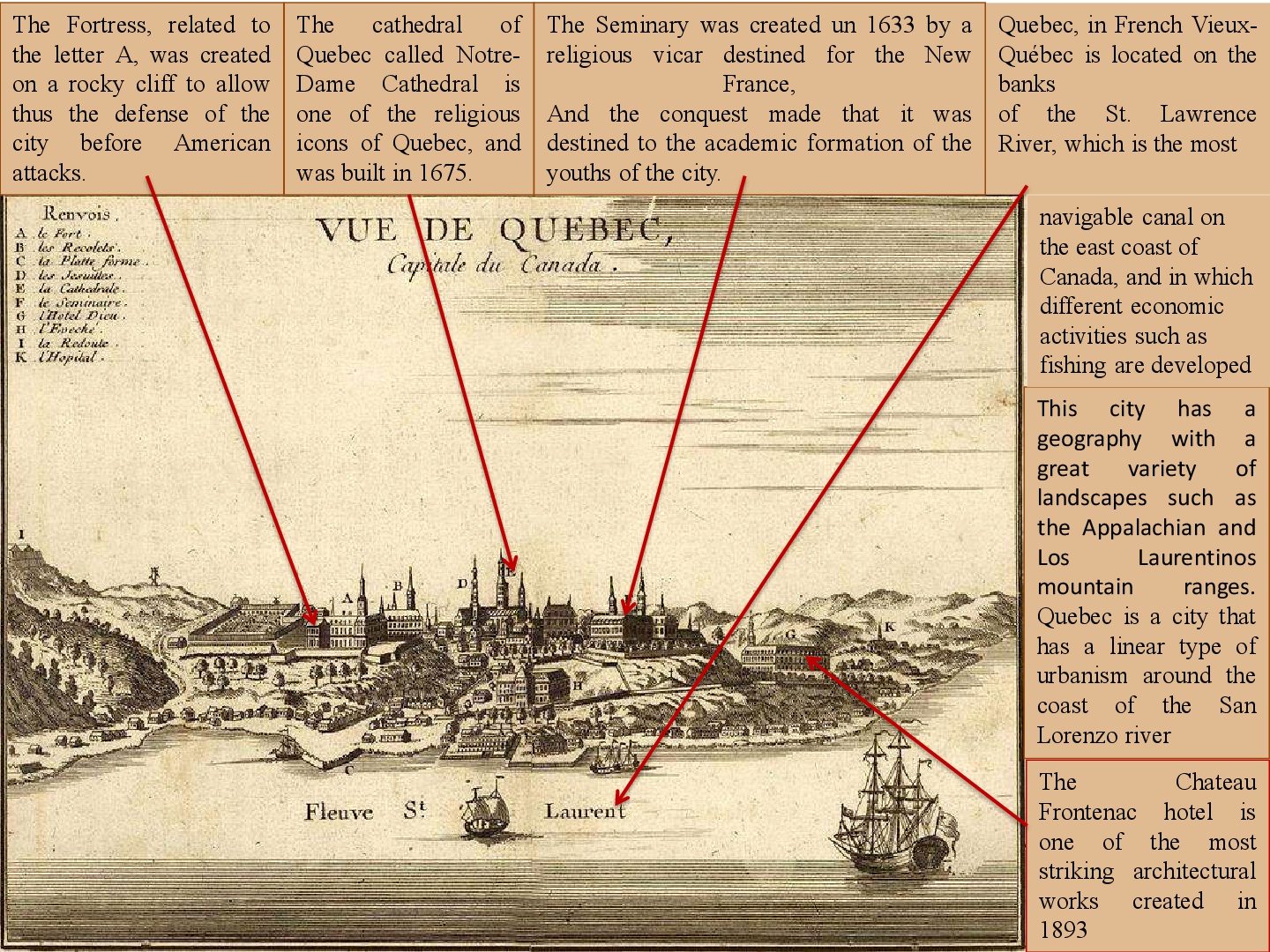According to Earl Jodeph, D. This picture was done by George Louise Le Rouge in 1755. The drawing is about the views of Quebec from Saint Laurent river and shows some significant parts of the city. This is one of the oldest cities in North America, since it was founded by Samuel de Champlain in 1608.
Quebec is situated to the east of Canada, a region with a great variety of landscapes from the Appalachian to the Laurentian mountain ranges. concretely, it is located on the banks of the St. Lawrence River, it is the most navigable canal on the east coast of Canada and delivers various economic activities such as fishing, farming, mining, hunting and trade. Its historical walled center is named as Old Quebec, in French Vieux-Québec. The official language of Quebec is French although there is a small part of the English-speaking population. In addition, it counts on a population mainly catholic due to the time of the French colonization. Actually, the French colonizers had to be careful because of the serious rivalry with the British Company of Hudson Bay.
At the beginning, Quebec had a linear type of urbanism along the coast of the Saint Laurent river. In the image we can see different parts that form the urban structure of Quebec. We will begin by describing the fortress that is related to the letter A in the image. This one was created on a rocky cliff to allow the defense of the city before American attacks. The fortress nowadays is still in use and serves as the residence of the officer of the Governor General of Canada. Today it is possible to enjoy as a tourist the change of the royal guard. The citadel is organized as a sort of star over the Upper City. Thus the uneven plan with different heights, makes the plane of the city more irregular and therefore difficult to determine. Quebec is made up of narrow, rectilinear streets and around urban squares. In general, Quebec is divided in the Upper City, protected by a wall with bastions and whose functions are the administration and the cult; and a Low City that is composed of the port of Saint Laurent river. The first one is an example of a fortified colonial city, whereas the second one works essentially as a business district.
The most significant element of Quebec is the Chateau Frontenac, today part of a touristic resort. This hotel is one of the most striking architectural works created in 1893, which through its windows makes possible the vision of the green field where the battle between the French and English army took place. Another important building is The Seminary, created in 1633 by a religious vicar destined for the New France and in 1665 linked to the Seminary of the Foreign Missions of Paris. This institution was conceived as a “place of retreat, from which we can obtain and capable subjects to send them to all points according to the needs of the parishes and all other places of that country…”. However, the conquest of New France un 1760 caused the Jesuit school to be closed and to be used for teaching that would welcome all young people who wanted to being their academic education. Today it is a teaching institution in a position to respond to the expectations of a society that continues to evolve.
The cathedral of Notre-Dame Cathedral is another religious icons for Quebec. It is located in the town hall of the city. Not to mention the cathedrals of Mexico, it is one of the oldest religious buildings in North America. It was built in 1647 but was modified in 1843. The old design of the cathedral was by Jean Baillairgé, and the modification was made with the purpose of seeking the similarity with a Parisian church for that it emphasizes the neoclassical style in the facade . There was a restoration of it in 1922 since inside it began a fire that destroyed the basilica. It is currently considered a building of great importance and together with the Historic Center of Quebec are part of the World Heritage of Unesco.
Marta González García

